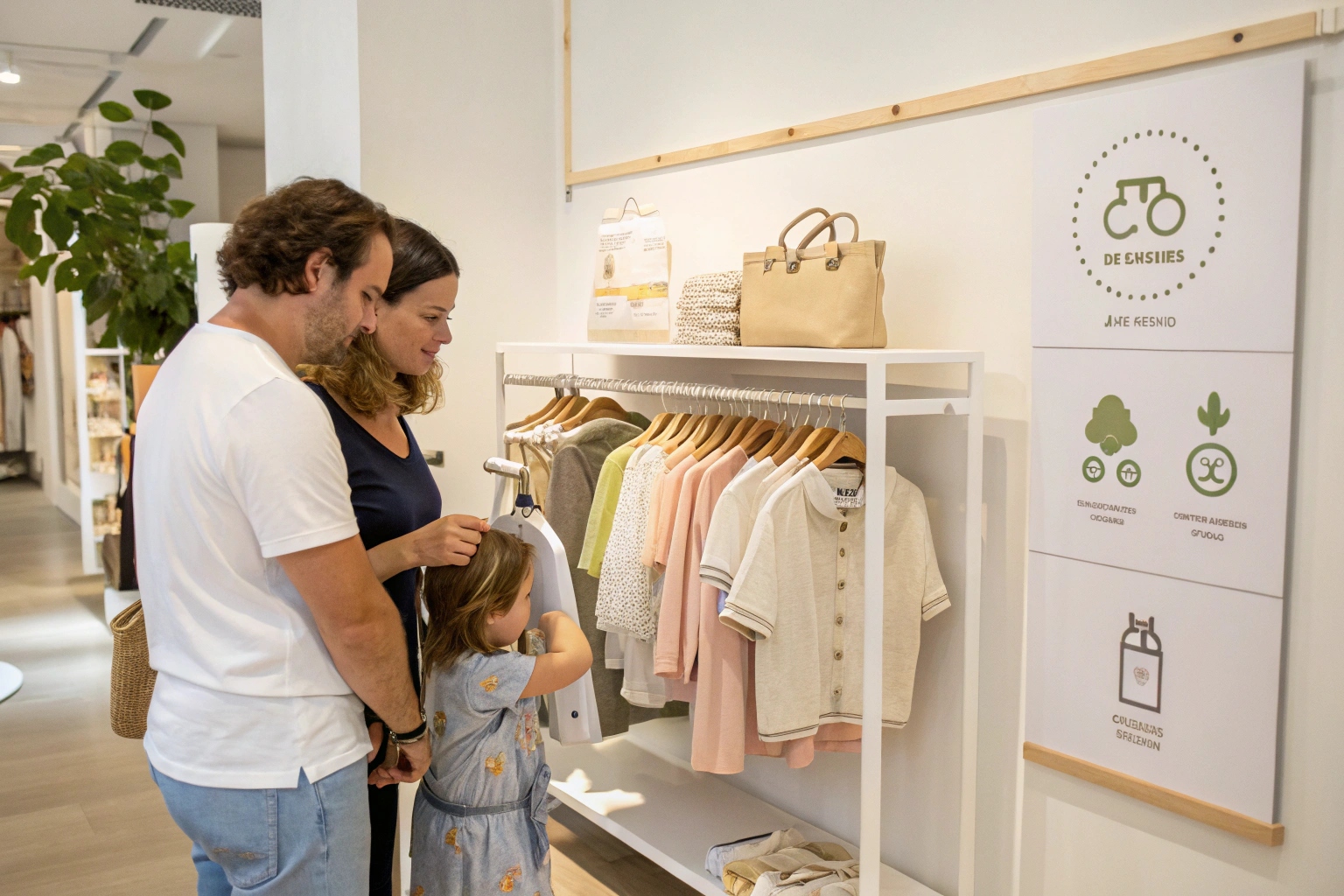Parents are shopping differently. They want fewer items, less clutter, and more value. The kidswear market is following suit.
Capsule-driven kidswear is the future. It’s built on smart design, conscious parenting, and a growing demand for sustainable, clutter-free clothing models.
At Fumao Clothing, we help brands adapt to these changes by offering lean, high-quality capsule production. Let’s explore why the next generation of kidswear will be defined by intentional simplicity.
Changing Parenting Habits That Favor Capsule Wardrobes?
Today’s parents are busier, smarter, and more selective—they want convenience, not excess.
Modern parenting habits lean toward capsule wardrobes because they simplify daily decisions, reduce waste, and support intentional shopping.
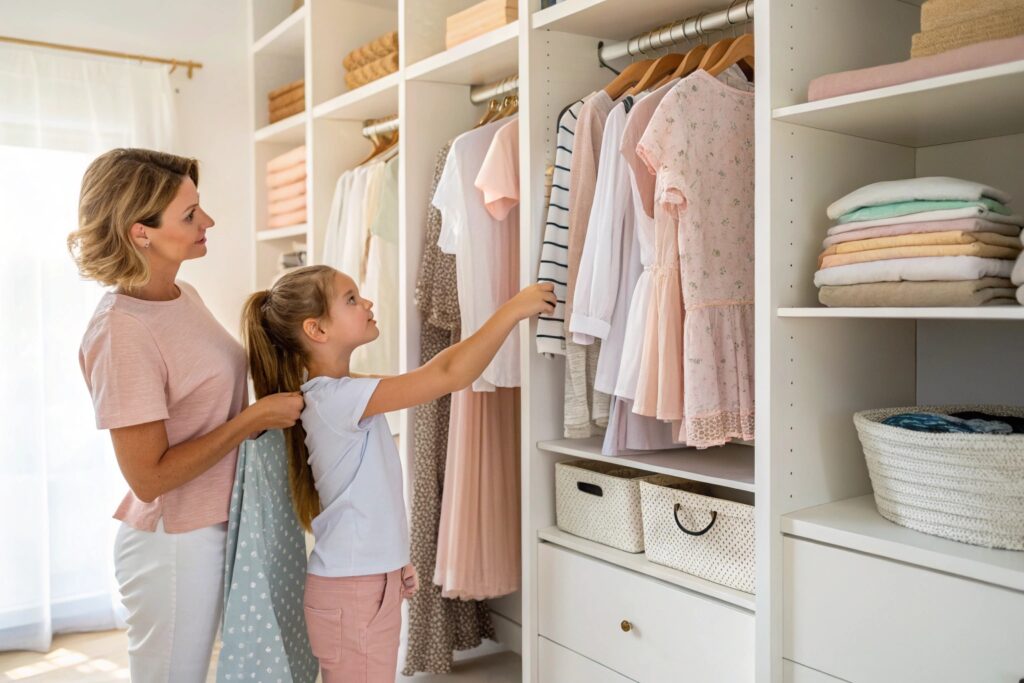
What shopping behaviors and lifestyle shifts among millennial and Gen Z parents are making capsule wardrobes more appealing?
Parents today are digitally native and efficiency-driven. Many are influenced by parenting blogs, Instagram reels, and decluttering movements like Marie Kondo. They seek “less but better.” For kidswear, that means:
- Curated closets with fewer, high-quality items
- Simplified morning routines
- Budgeting without sacrificing aesthetics
These shifts create demand for capsule formats that are smart, stylish, and stress-free. We’ve seen this firsthand—clients who target millennial parents now ask us for “bundle-ready capsule sets” to promote on their online stores.
How do modern parents use capsule shopping to teach kids about value, simplicity, and responsibility?
Capsule wardrobes also reflect parenting values. Parents want to raise children who care about waste, quality, and intentionality. Many moms tell us they use capsule closets to teach kids:
- How to mix and match
- Why fewer things can mean more creativity
- How to care for clothes
When we help brands build capsule kits with educational inserts (styling guides, care tips, and QR code activity sheets), parents engage deeper—and they come back to buy again.
How Minimalism and Sustainability Shape Kidswear Trends
Minimalism isn’t just a buzzword—it’s a parenting strategy and a lifestyle choice, shaping product preferences across the board.
Sustainability and minimalism are redefining kidswear. Capsule wardrobes reduce consumption, avoid trends, and support the values modern families care about most.
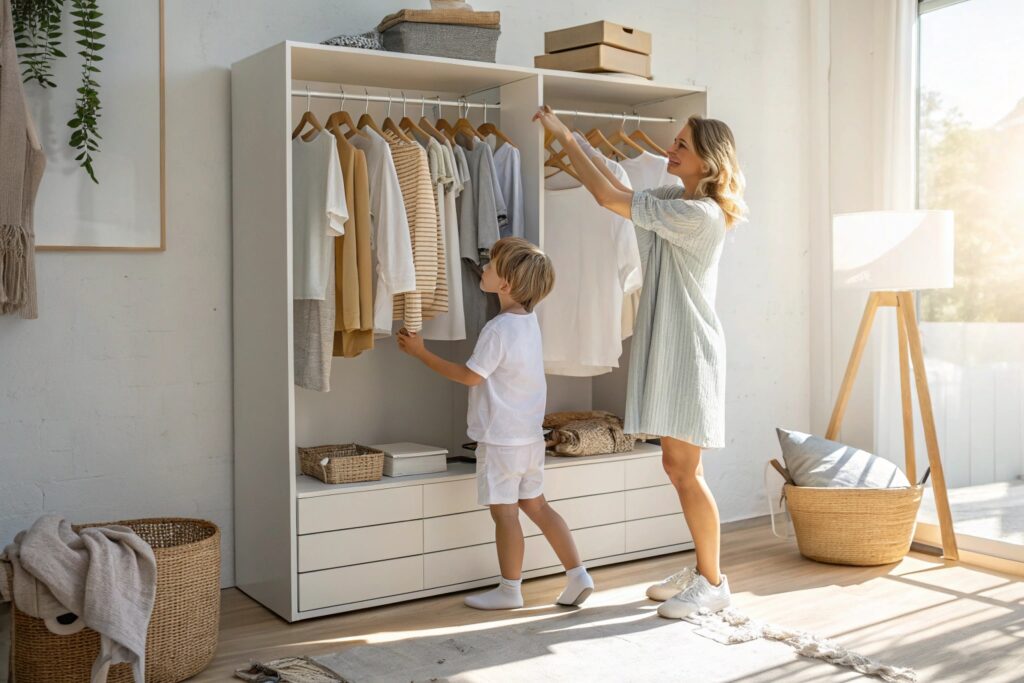
Why are more families rejecting traditional bulk-buying in favor of smaller, more intentional kidswear collections?
Big wardrobes with 50+ items per season used to feel necessary. Now, they feel like clutter. Parents realize that their kids wear the same 10 pieces on rotation. This has driven a shift toward capsule formats built around:
- Daily utility
- Neutral palettes
- Seasonal consistency
Parents aren’t just buying clothes—they’re curating wardrobes that feel calm, practical, and aligned with sustainability goals. That’s why many brands we manufacture for are launching “seasonal kits” instead of endless SKUs.
What’s the connection between sustainable values and the capsule model in children’s clothing?
The capsule approach naturally aligns with sustainability:
- Less production = lower emissions
- Longer wear = less textile waste
- Modular sets = reduced overconsumption
At Fumao, we’ve seen rising demand for OEKO-TEX-certified fabrics and mono-material garments that are easier to recycle. Capsule production lets us build these with minimal leftovers, while also allowing brands to communicate a clear value story.
Here’s how capsule vs. traditional models compare in sustainability:
| Model Type | Production Waste | Avg. Usage Per Item | Storage Needs | Returns/Excess |
|---|---|---|---|---|
| Traditional Kidswear | High | Low | Bulky | High |
| Capsule Kidswear | Low | High | Compact | Low |
The numbers—and the values—don’t lie.
Why Retailers Are Shifting to Seasonal Capsule Drops
Retail isn’t about volume anymore. It’s about agility and timing. Capsule drops meet both demands.
Seasonal capsule drops allow retailers to move faster, avoid dead stock, and align inventory with real-time customer needs.
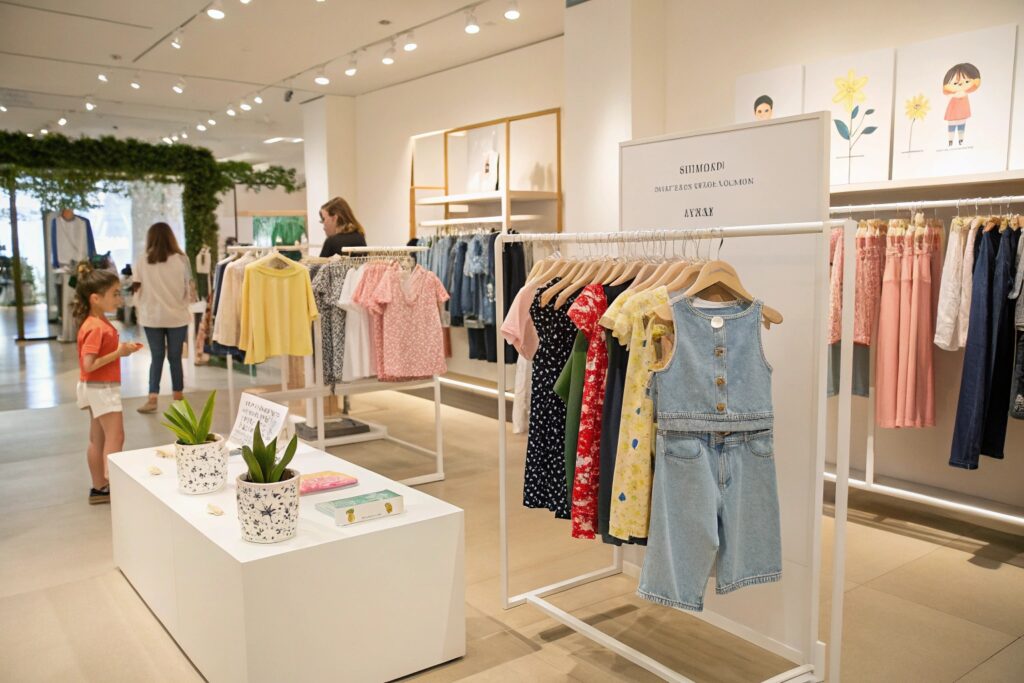
How are kidswear retailers using seasonal drops to manage inventory better and increase sell-through rates?
Capsules give retailers predictability. They can:
- Launch smaller batches
- Test market response
- Avoid deep markdowns
A client in Canada told us their sell-through rate jumped from 40% to 82% after switching from rolling inventory to 4 planned capsule drops a year.
Retailers now use capsule calendars like:
| Season | Capsule Theme | Launch Window | Target Buyer Need |
|---|---|---|---|
| Spring | Layer-Ready Capsule | Feb-March | Back to school + layering |
| Summer | Easy Play Kit | May | Lightweight, sweat-proof |
| Fall | Cozy Basics Capsule | Aug-Sept | Transitional weather |
| Winter | Warm Essentials | Nov | Holiday gifting + warmth |
This rhythm helps retail buyers plan purchases—and helps brands create better sell-in and sell-through stories.
How do capsule drops create marketing momentum and build repeat purchase habits among parents?
Capsules create urgency. Customers know they’re limited, and that drives action. But more than that, seasonal drops build brand anticipation. When done right, each drop feels like a curated event.
Some tactics we help clients use:
- Email countdowns for new drops
- Previews via SMS or WhatsApp
- Waitlists for high-demand capsule items
- Bundle pricing (buy 3, save 20%)
This cycle builds a repeat-purchase habit. Parents don’t need to browse—they trust the brand’s capsule curation and return every season.
The Role of Versatile Design in Future Kids’ Fashion
Tomorrow’s kidswear needs to do more with less—just like the families who buy it.
Versatile design is the backbone of capsule kidswear. It allows a few items to serve many purposes, adapting to growth, seasons, and daily routines.
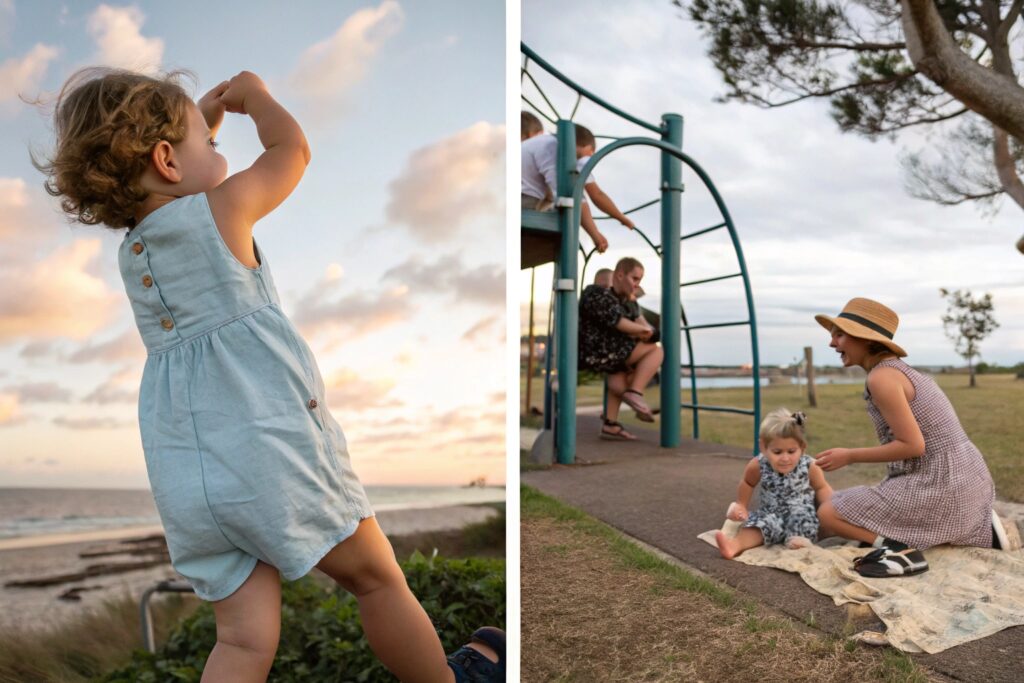
What does “versatility” mean in the context of children’s clothing design, and how is it applied to capsule collections?
Versatility means stretch, adjustability, and mix-and-match ability. Our clients often request:
- Gender-neutral palettes for easier hand-me-down use
- Adjustable waists, cuffs, or straps for longer wear
- Seasonless layering options like light hoodies or vests
We designed a recent capsule with hidden snap extenders in bodysuits. Parents told us they added 3 extra months of wear per size. That’s versatility in action.
How do brands balance fashion appeal with functionality when designing minimalist, multi-use garments for kids?
Style still matters. But capsule fashion trades flash for form. We use minimal cuts with thoughtful accents—contrast piping, colorblocking, or textures—to keep things visually interesting.
When done right, each item in the capsule works for:
- School
- Park
- Family events
- Travel
For example, a simple cotton dress can go from playground to photoshoot with the right cardigan. That’s the kind of value parents are seeking—and the kind of product we help brands build.
Conclusion
The future of kidswear is capsule-driven because it meets the moment: smarter parents, sustainable values, and a demand for simplicity. Capsule design isn’t a trend—it’s a better way forward for kids, families, and the planet.

